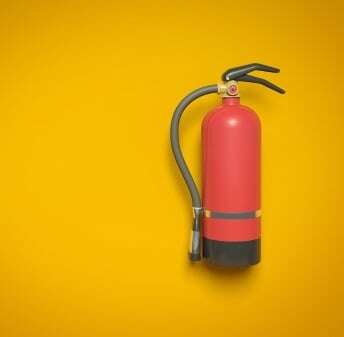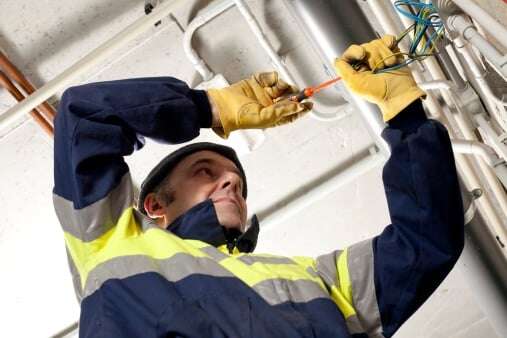 You already know that home fires are more common during the holidays than at any other time of the year, with about 150 fires causing an astounding $8 million in property damage, according to the National Fire Protection Association.
You already know that home fires are more common during the holidays than at any other time of the year, with about 150 fires causing an astounding $8 million in property damage, according to the National Fire Protection Association.
You've probably taught your children how to dial 911 in case a fire breaks out in your home, which is always the smartest call to make. But if a small, confined fire were to start in your home, you probably could put it out yourself – as long as you have the proper fire extinguisher and know how to use it.
Fire extinguishers should be one element in your home's fire response plan. The other two: functioning smoke detectors and an escape plan. Let Experts in Your Home tell you what you need to know about selecting and using a fire extinguisher to keep you and your family safe – all year long.
Know the Extinguisher Alphabet
Fire extinguishers are sold at most home improvement stores. When you check the label on an extinguisher, you will see a letter or letters – A, B, C, D and ABC – which correspond to the type of fire the extinguisher is built to fight:
- Class A extinguishers are effective on most flammable materials, including cloth, paper, plastic and wood.
- Class B extinguishers work on flammable liquids, such as kitchen grease, oil and gasoline.
- Class C extinguishers put out electrical fires, meaning anything that is energized by electricity, such as appliances and computers.
- Class D extinguishers are used on combustible metal fires, which means they aren't designed for home use.
- Class ABC extinguishers work on Class A, B and C fires, which makes them ideal for a home.
Know Other Extinguisher Basics
With the field narrowed considerably, also be sure to:
- Purchase at least one fire extinguisher for your home, but know that the association recommends one for every floor.
- Choose one that includes a label from an independent testing laboratory.
- Select one that is light enough for you to handle.
- Read the instructions and familiarize yourself with the parts and how they function.
Know When to Use an Extinguisher
Sometimes it is better and safer to leave your home and dial 911 than to try to extinguish a fire yourself. One of these times is if your home has already filled with smoke. Also, if you answer “no” to any of these questions, exit your home quickly and rely on the fire department instead:
- Is the fire confined to only one area and not growing?
- Do you know what triggered the fire?
- Are you certain that you have the right type of fire extinguisher?
- Have you read the instructions and do you know how to use your fire extinguisher?
- Can you keep your back to an exit that is safe and free of fire?
Know How to Operate an Extinguisher
Just like when you took a test in school, an acronym might help you remember the steps in using a fire extinguisher properly. In this case, remember the acronym PASS:
- Pull the pin, point the nozzle away from you and release the locking mechanism.
- Aim low, not high, by pointing the nozzle at the base of the fire.
- Squeeze the lever evenly and slowly.
- Sweep the nozzle from side to side.
Fire extinguishers can be lifesavers, but they do have limitations. Namely, they are are limited by their size. And if you've ever seen a bonfire ignite with fury, you know how fast a fire can grow. So if you're in doubt about a fire extinguisher's ability to squelch a fire, trust your instincts, go to a safe place and call 911.
Meanwhile, never hesitate to contact the Experts if we can help you devise a fire response plan or practice using your fire extinguisher so that you and your family stay safe from fire – all year long. We hope these home tips have been helpful for your safety.








